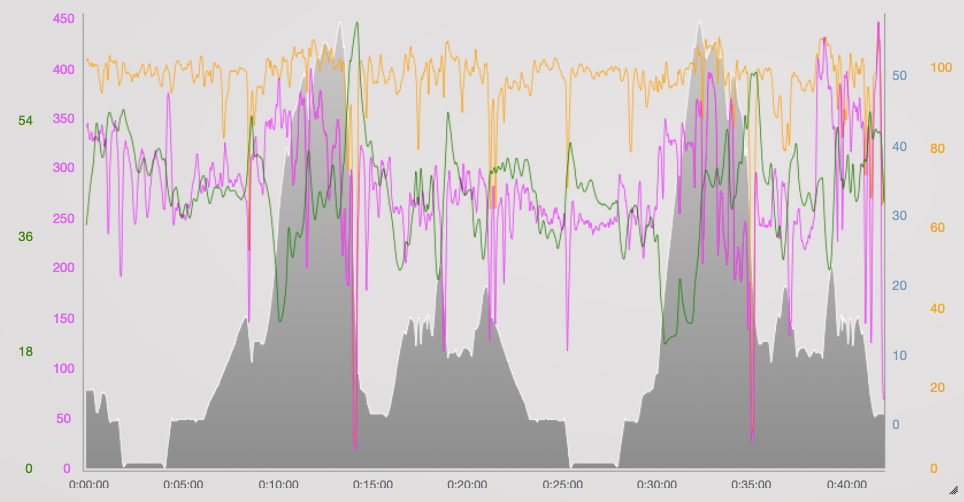Zwift events: using the gradient changes to take micro breaks
- Sans Chaine

- Feb 26, 2021
- 2 min read
Updated: Dec 21, 2021
Racing on Zwift isn’t like riding outdoors. The drafting effect appears to mainly affect your speed - you get pulled along with a group faster than you would go if riding on your own - but your wattage doesn’t change when you are “in the wheels”. You still have to push as hard, even as you go faster. The danger here is that it can turn your Zwift events into time trials.
Micro breaks
The thing that can save us from having to time trial a Zwift event is the changing gradient on a rolling course. The steeper the downhill the more constant your speed will remain, even as you back off your effort. You can even stop pedalling all together and do a supertuck if going fast enough.
Here is a look at a race done on Watopia’s Hilly Loop. Notice that every time there is a downhill that cadence (rpm) and wattage fall, but speed remains constant.

And for a closer look, this is the descent off one of the climbs:

Taking advantage of even short changes in gradient - micro breaks - can give you a cumulative increase in recovery time across an event. When you are doing a hard effort, even a few seconds of respite can feel like a big rest.
Pro tip: the one caveat to taking these micro breaks - watch the gradient and anticipate having to turn the watts back on as it does take a few seconds for the trainer to react!
When doing Zwift events you have to watch the gradient and your speed all the time. Whenever the gradient goes negative you can back off the effort a bit, keeping an eye on your speed to ensure it stays constant. These micro breaks can add up across an event and really give you some relief after those key moments when you do have to push harder to stay with the group.

Give ‘er and do your best!




Comments